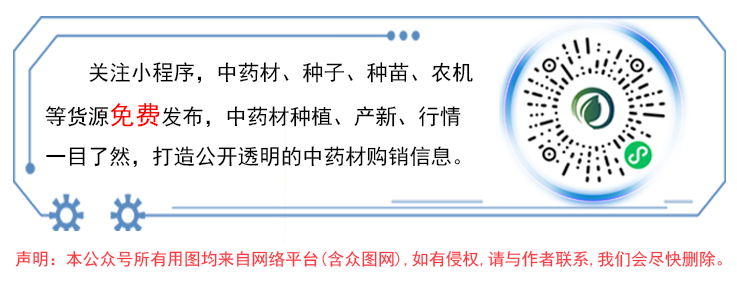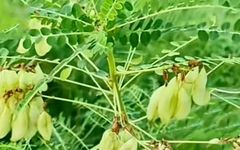

Huang Qi (Astragalus membranaceus) is the dried root of the leguminous plant Mongolian Astragalus or Membranous Pod Astragalus. Huang Qi contains various active components such as triterpenoid saponins, flavonoids, polysaccharides, trace elements, and amino acids. Huang Qi is first recorded in the Shen Nong Ben Cao Jing. Li Shizhen in the Ben Cao Gang Mu explains its name: “Qi means long. Huang Qi is yellow in color, and as a superior tonic, it is named accordingly.” Recent years have seen significant progress in the standardized cultivation techniques, suitable harvesting periods, and processing methods of Huang Qi. For instance, seed treatment techniques can ensure a high germination rate, and timely harvesting techniques can guarantee the quality of Huang Qi. Research on the breeding technology of high-quality seed sources, further increasing yield, and innovating primary processing techniques remains a major direction for future cultivation research.

Properties and Channels:
Sweet in flavor and slightly warm in nature. It enters the Lung and Spleen meridians.
Functions and Indications:
Tonifies Qi and raises Yang, stabilizes the exterior and stops sweating, promotes urination and reduces swelling, generates fluids and nourishes blood, alleviates stagnation and relieves pain, expels toxins and promotes pus discharge, and promotes healing of sores.
Clinical Applications:
Used for Qi deficiency and fatigue, poor appetite and loose stools, sinking Qi, chronic diarrhea and prolapse of the rectum, blood in stools and abnormal uterine bleeding, spontaneous sweating due to deficiency, Qi deficiency with edema, internal heat with thirst, blood deficiency with sallow complexion, hemiplegia, numbness and pain, difficult-to-heal abscesses, and chronic non-healing sores.
Dosage:
Decoction, 9–30g.
Precautions:
Huang Qi should be avoided with raw and cold foods, during menstruation for women, in cases of Kidney Yin deficiency, during pregnancy, in cases of excess heat, in young children, and should not be combined indiscriminately with other herbs.
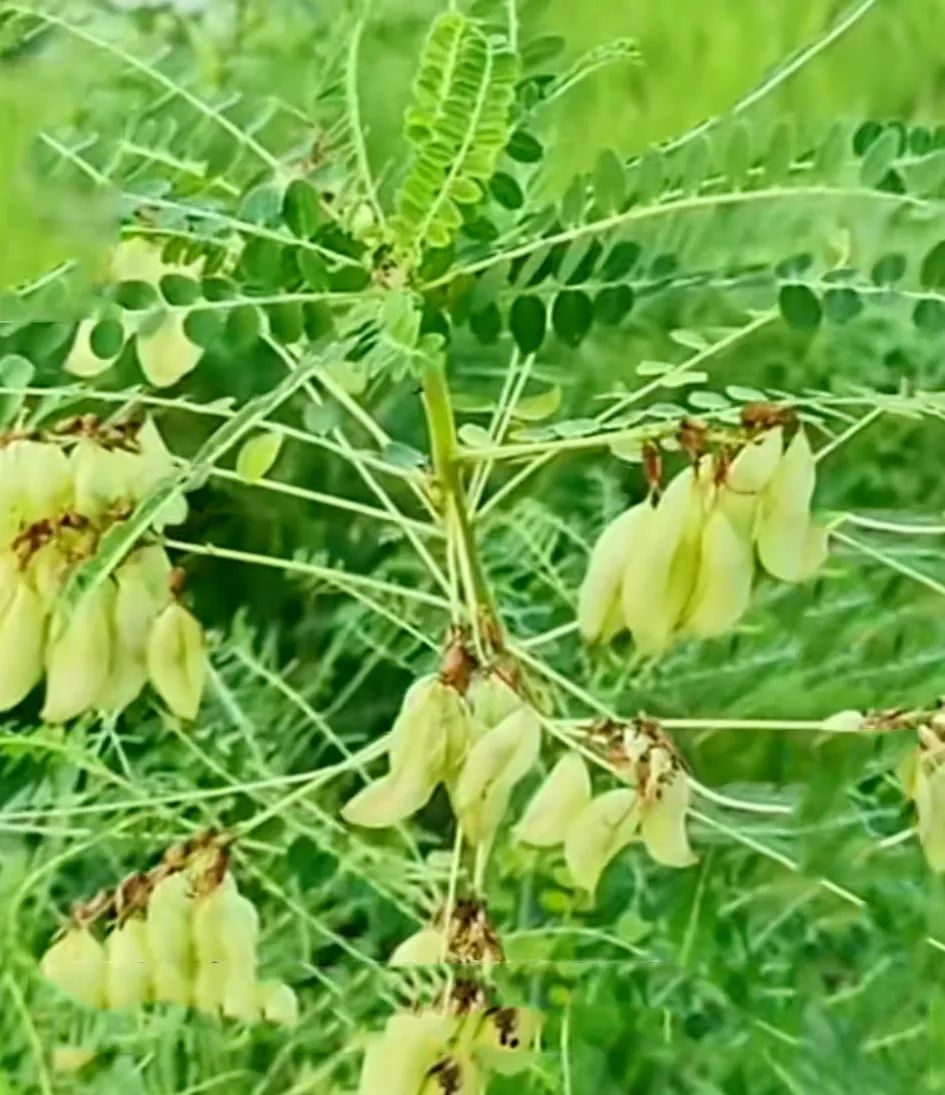

Mongolian Huang Qi is distributed in Heilongjiang, Jilin, Hebei, Shanxi, Inner Mongolia, and other provinces; Membranous Pod Huang Qi is found in Heilongjiang, Jilin, Liaoning, Hebei, Shandong, Shanxi, Inner Mongolia, Shaanxi, Ningxia, Gansu, Qinghai, Xinjiang, Sichuan, and Yunnan.

1. Cost Analysis for Planting One Acre:
1. Land Rent: The rent for land is about 1000 yuan per acre, but it mainly depends on local market conditions.
2. Seed Costs: The cost of planting Huang Qi is relatively high, generally around 110 yuan/kg, with about 3kg of seeds needed per acre, totaling approximately 350 yuan. If using seedlings, about 50kg of seedlings are needed per acre, with a price of around 25 yuan, leading to a total seedling cost of about 1000 yuan.
3. Fertilizers and Pesticides: Huang Qi has a high nutritional demand during growth, thus requiring the use of farmyard manure and compound fertilizers, totaling around 400 yuan, with an additional 100 yuan for pest control, bringing the total to 500 yuan.
4. Labor and Other Costs: For larger planting areas, labor for cultivation, management, irrigation, and harvesting is needed, with mechanization and some unexpected costs totaling around 1500 yuan.
Therefore, the total cost for planting one acre is approximately 3300–4000 yuan.
2. Profit Analysis:
Huang Qi is primarily sold in fresh and dried forms in the market. One acre can yield about 1800 jin of fresh Huang Qi, with a market price of about 4 yuan per jin, leading to a total value of around 7200 yuan per acre. After deducting planting costs, a profit of 3000–4000 yuan can be achieved per acre.
If processed into dried Huang Qi, every 5 jin of fresh product can be processed into 1kg of dried product, thus yielding about 300kg of dried product per acre. The current price for dried product is around 20 yuan/kg, leading to a total value of about 6000 yuan. Therefore, selling dried products would reduce the profit by about 1000 yuan per acre.

1. Membranous Pod Huang Qi
A perennial herb, growing 0.5–1.5m tall. The root is straight and long, cylindrical, slightly woody, 20–50cm long, with a diameter of 1.5–3cm at the root head, and the skin is light brown to dark brown. The stem is erect, branched, and covered with long soft hairs. The leaves are alternate, pinnate, with lanceolate stipules at the base of the petiole; the leaf axis is hairy; there are 13–31 leaflets, which are ovate-lanceolate or elliptical, 0.8–3cm long, with a slightly blunt apex and a short tip, wedge-shaped at the base, entire, and without petiolules. In summer, racemes emerge from the leaf axils, longer than the leaves; the calyx has 5 shallow lobes, tubular; the butterfly-shaped corolla is pale yellow, about 1.6cm long, with the standard petal being triangular and ovate, and both the wing and keel petals having long claw-like appendages. The pod is membranous, inflated, ovate-lanceolate, over 2cm long, with a beak at the tip, covered with short black hairs. The seeds are 5–6, kidney-shaped, and brownish-yellow.
2. Inner Mongolia Huang Qi
Similar in appearance to the above, with stipules that are triangular-ovate, more leaflets (25–37), and the leaflets are shorter and wider, ovate. The flower corolla is yellow, less than 2cm long. The pod is hairless and has a distinct net-like pattern.
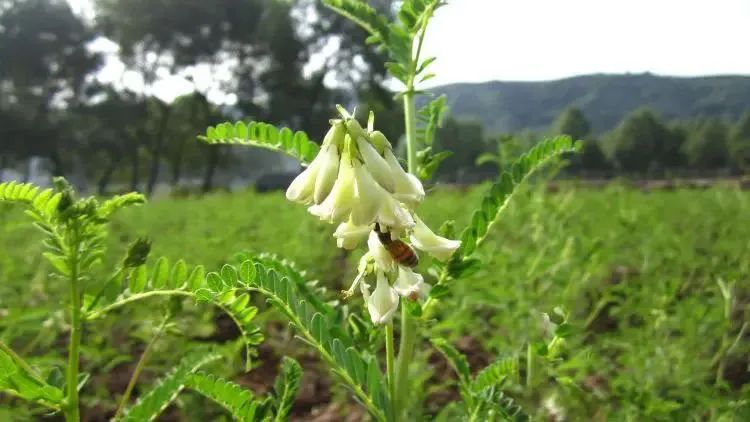


Sunlight Requirements:
Huang Qi is suitable for growth in highland grasslands, forest edges, and mountainous areas at altitudes of 800–1800m. It is a long-day plant; seedlings are weak and sensitive to strong light, while mature plants prefer ample sunlight, requiring a total annual solar radiation of 110–140kcal/c㎡, with 130kcal/c㎡ being optimal.
Climate Requirements:
Huang Qi prefers a cool climate, requiring an average annual temperature of 3–8℃, with accumulated temperature ≥10℃ of 3000–3400℃, with 3200℃ being optimal; Huang Qi can withstand winter temperatures as low as -40℃ and can grow normally at summer temperatures up to 38℃.
Soil and Moisture Requirements:
Huang Qi has strict requirements for soil moisture. The young roots of 1-2 year old Huang Qi can grow well in moist soil, but as the plant ages, the storage function of the old roots increases, and the position of the fibrous roots moves downward, with the main root enlarging, becoming intolerant to high temperatures and waterlogging. Excess moisture can lead to root rot. Therefore, it is essential to choose well-draining land for cultivation to protect the normal growth of the roots. The annual rainfall suitable for Huang Qi is 300–450mm. Huang Qi roots have strong adaptability to different soil types, textures, and thicknesses, but the content of effective components and commercial quality varies significantly. The most suitable soil for Huang Qi is deep sandy loam or alluvial soil, with a suitable pH of 7–8. Heavy, compacted soils should be avoided. Continuous cropping should be avoided, and it is not suitable to plant with potatoes, chrysanthemums, or Atractylodes.
Huang Qi goes through five growth stages from sowing to seed maturity: seedling growth stage, wilting wintering stage, greening stage, budding and flowering stage, and fruit ripening stage.
Huang Qi seeds have a hard seed coat, with a hard seed rate generally between 40% and 80%, leading to poor permeability and low water absorption. In production, seeds are generally pre-treated before sowing to break the impermeability of the seed coat and improve germination rates. After the Huang Qi seeds absorb water and swell, at soil temperatures of 7–8℃, maintaining sufficient soil moisture, germination can occur in 10–15 days. Before the appearance of five compound leaves, the root system is not fully developed, shallowly planted, and has poor absorption, being sensitive to drought, high temperatures, and strong light. After the appearance of five compound leaves, the root system’s ability to absorb water and nutrients increases, leaf area expands, photosynthesis enhances, and the growth rate of seedlings significantly accelerates. Generally, Huang Qi sown in the same year remains in the seedling growth stage without flowering or fruiting.
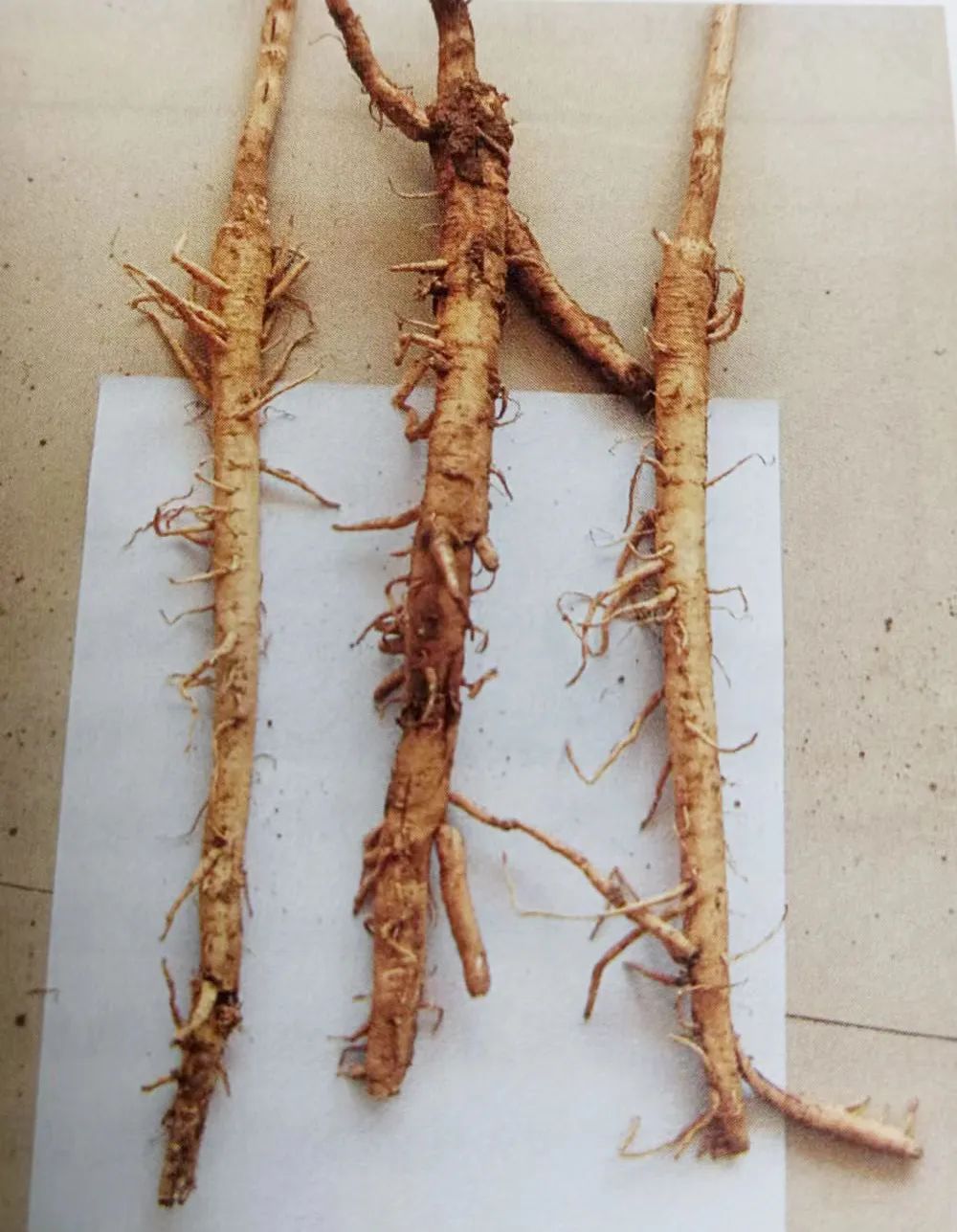
The above-ground part of Huang Qi wilts until the second year before the plant greens again, referred to as the wilting wintering stage. Generally, in late September, the leaves begin to yellow, the above-ground part wilts, and the underground root buds form. This stage lasts about 180–190 days. Huang Qi has strong cold resistance and can survive winter without covering.
The process of Huang Qi’s winter buds sprouting and growing above ground is called greening. In spring, when the local temperature reaches 5–10℃, Huang Qi begins to green. First, it produces cluster buds, then differentiates stems, branches, and leaves, forming new plants. The initial growth period is rapid, reaching normal height in about 30 days, after which the growth rate slows down, significantly influenced by temperature and moisture.
Plants of Huang Qi that are 2 years old or older generally show flower buds in early June, gradually enlarging, with flower stalks emerging and buds forming over 20–30 days. Flowering occurs in early July, lasting 20–25 days, and the fruiting period begins in mid-July, lasting about 30 days. If high temperatures and drought occur during the fruit maturation period, it can increase the hard seed rate, reducing seed quality. The roots of Huang Qi grow fastest before flowering and fruiting, with the above-ground photosynthetic products primarily transported to the roots, while later, due to reproductive growth, a large amount of nutrients is consumed, slowing root growth.
